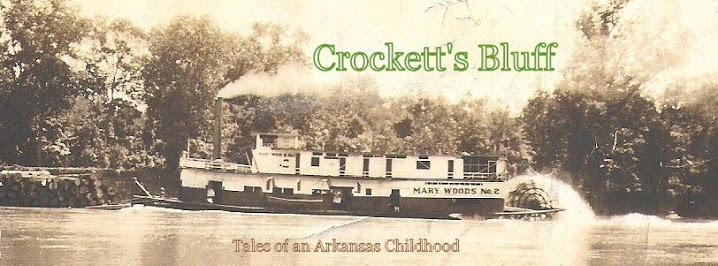Many pictures, particularly those with some age and history behind them, are indeed worth a thousand words, as the old saying asserts. Such words are at the same time worth even more when they are rich with detail and enlightenment -- or even simple nostalgia.
The following pictures are examples special to me. Although I know something about them, others still among the living know even more than I, particularly about the circumstances of the moment captured in the image, as well as the subjects pictured.
Pictured above is my sister Maurine and my brother Neil on either side of Carlotta Smith at our old home place at the Bluff during the days, perhaps in the late 1940's, before the old water tank was removed from its platform near the back porch. It's obviously summer and Carlotta's white sandals stand out above the bare feet of my siblings resting in the grass out of sight. Special occasion? Who made the picture and why?
This is the basic structure of the Lutheran Church that stood for years before World War II on the river road at the end of drive up from our house. Sometime after the Prange family closed its store and moved to California the congregation diminished apparently to its end, and the structure was somehow moved four or five miles west of the Bluff to replace a previous structure of the Afro-American congregation at Poplar Creek where it stands today with several of the concrete piers that supported the west end of the original structure serving as an entry. There must be former Bluff dwellers still alive with knowledge of the details of this transformation. If so, these details need to be recorded before they are lost.
These pictures made by Ken Shireman -- originally 35 mm slides recovered digitally -- capture a visit made by him and his sons John and Jason, along with my father S.A., to the river side houseboat of Tony Elmer? a half mile or so around the bend and down from the bluffs themselves, perhaps the last of its kind (that actually floated on logs) to survive in the Bluff area where there had been numerous such structures into the 1930's and early '40's.
The second picture of my father S.A. Woodiel and John Shireman obviously captures the excitement of what might be John's first deer. Details please?
The final image of this series is of Russell Marrs on an occasion when he was explaining to Ken the reason for dragging for shells from the White River -- the "pearl button" industry. Though this procedure has been depicted over the years by others, it was an arduous enterprise -- genuine hard and hot work -- for many river residents during the depression years, especially. There's much to be said about both the process and the "work ethic" that dragging for shells reflects. [After "the war," several heroic individuals such as Russell and O.V. Gosnell created rudimentary diving helmets that enabled them to "dive" or decend on anchored ropes to simply gather the mollusks from the river bottom into long knitted sacks. O.V. hired me at fifty-cents per hour (great wages at the time) as a lookout while he "dove." My duties were to watch for steamboats and the maintenance of the simple engine that pumped air through a garden hose to his helmet below. This, of course, is another story on my list.]







